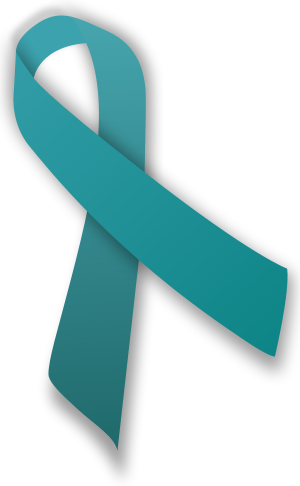
Most of us would know if something felt a little strange, “off,” “heavy” in our breasts … We’d feel a lump or spy a strange nipple symptom. We don’t need Facebook statuses about the colors of our friends’ bras to remind us of that. But what about when it comes to our ovaries?
When it comes to ovarian cancer, a disease that affects one in 60 women in the U.S., it seems like the medical community is at almost as much a loss for identifying it as we are. not that breast cancer isn’t incredibly important to be aware of as well, but the apparent lack of effective screening for ovarian cancer makes me wonder where all the 5Ks, colored ribbons (turns out it’s actually teal—who knew?) and themed cosmetics are for the disease.
The best screening strategies available for ovarian cancer only reduce the number of fatalities by 11 percent, according to Dr. Laura Havrilesky, a researcher at Duke University Medical Center who recently led a team that designed a computer-based model illustrating the progression of ovarian cancer from the early to later stages. She concluded that strategies, such as prevention (like removing the ovaries of high-risk women) and better treatments (like new surgical techniques or chemo), will be needed in order to make a difference in lowering the number of women dying from ovarian cancer.
While development of new techniques sounds great and is obviously needed, it drives me crazy that the solutions immediately have to be surgeries, drugs, or taking out the ovaries of women who are deemed to be at a higher risk for developing the disease. I mean, wow, do we really have to take it to such extremes?
One thing that’s heartening is that experts at Cedars-Sinai Women’s Cancer Research Institute say the disease doesn’t have to be deadly. when it’s diagnosed early, the five-year survival rate is over 90 percent. and contrary to what you might read or hear, ovarian cancer is not a “Silent Killer”; it is marked by various quiet, but persistent symptoms, such as abdominal bloating, pelvic and/or low back pain, early satiety or the feeling that you’re getting full too quickly and a change in the frequency/urgency of urination.
Maybe, the first step isn’t to rush women off to go under the knife, have their ovaries removed and/or to take toxic prescriptions. Instead, we should be striving to tune into our symptoms and trust our intuition about our bodies. Then, both patient and doctor need to more effectively communicate about possible symptoms.
The bottom-line: Neither current screening methods for women who are symptomatic—a transvaginal ultrasound and a CA-125 blood test—are perfect. The medical community can and must do better. But I’ll be keeping my fingers crossed that researchers realize the best techniques would hopefully also be minimally invasive ones.
Do you think the medical community is too slow to find an effective method for detecting ovarian cancer?
Image via Debs/Flickr